These Ayurvedic recipes are so cool, they make healthy look easy
- By Tarvene ShahpuriLoading...
- | 17 Jan 2021 1:52 PM IST
 X
X
We’ve all heard the, “you are what you eat”, but we are not only the result of what we eat but also when, how, and why we eat it.
Ayurveda
Ayurveda is a balanced approach that suggests we eat mindfully and with gratitude. The age-old Indian tradition is based on the belief that our food should be fresh, digestible, and prepared with love and care.
According to Ayurvedic doctor, Manaan Gandhi, we should eat a variety of foods and spices that are aromatic, visually appealing, and flavourful. Different ingredients should be added to our daily diets depending upon our doshas. As per Ayurveda, there are three doshas – Vata, Pitta, and Kapha.
Dr. Gandhi suggests that the Vatta body type, should include hing in their daily diet, Pitta should ensure that their diet is packed with giloy and Kapha dosha should include dried ginger powder in their daily diet.
The Ayurvedic belief suggests that we have all six tastes in our daily food: sweet, sour, salty, pungent, bitter, and astringent in order to feel satisfied and digest our food properly.
Based on Ayurvedic principles, we have scoured 5 easy-to-make Ayurvedic food recipes that you can try making at home.
Quinoa salad with tangy tahini sauce
This filling and easy-to-digest salad makes for a great picnic meal, outdoor cookout, or potluck. You can even dress it with some fresh greens like lettuce or steamed kale.
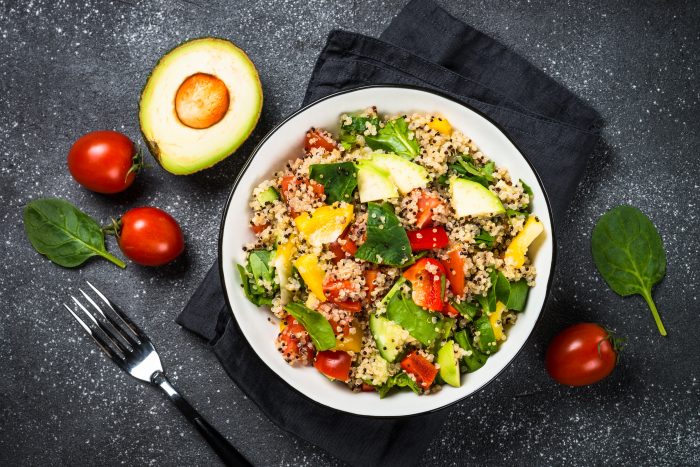
Ingredients:
• 1 cup dried chickpeas
• 1 pinch hing
• 1 cup quinoa (a mixture of white and red, if available, for added pizzazz)
• 1 1/2 cups water
• 1/2 tsp mineral salt
• 3 tbs extra virgin olive oil
• 1/3 cup raisins (optional*), rehydrated in water
• 1/3 cup sun-dried tomatoes, coarsely chopped, rehydrated in water (substitution: 1 cup cherry tomatoes sliced in half lengthwise)
• 2 large handfuls fresh parsley, coarsely chopped
• 2 large handfuls fresh mint leaves, coarsely chopped
• 1/2 tsp ground cinnamon
• 1/3-1/2 cup feta cheese, crumbled (optional*)
• Mineral salt and freshly ground black pepper to taste
Method:
1. Wash the chickpeas in several changes cold water. Cover with at least 4 inches fresh water and soak overnight.
2. In a separate bowl, wash the quinoa in several changes of cold water, massaging the grain in the process. This removes the sticky coating that can otherwise create digestive distress. For enhanced digestibility, soak the quinoa overnight in a large bowl covered with fresh water.
3. Begin the salad by preparing the chickpeas. Drain the soaking water then cook in a 2-quart pot covered with 4 inches of water along with the pinch of hing. Scrape off any foam that rises to the top during the cooking process. Plan on approximately 45 minutes for the cooking to be done. When chickpeas are soft, drain and rinse. Set aside.
4. While the chickpeas are cooking, drain the quinoa and cook in 2-quart pot with 1 ½ cups water and ½ tsp. salt. Cook for 10 – 15 minutes until all the water is absorbed. Remove from heat. Drizzle the olive oil over the top and fluff with a fork. Transfer to a large serving bowl to cool.
5. While the chickpeas and quinoa are cooking, prepare the other ingredients. Soak the raisins and sun-dried tomatoes separately in twice their amount of warm water. Chop the fresh herbs.
6. Drain the optional raisins and sun-dried tomatoes. Add them, along with the chick-peas, parsley, mint, cinnamon, and optional crumbled feta cheese to the quinoa. Dress with the tahini sauce and gently toss until the sauce coats all the ingredients. Adjust the seasoning with salt and/or pepper.
Ayurveda Kitchari
Kitchari means mixture, usually of two grains. This kitchari recipe is particularly nourishing and easy to digest.
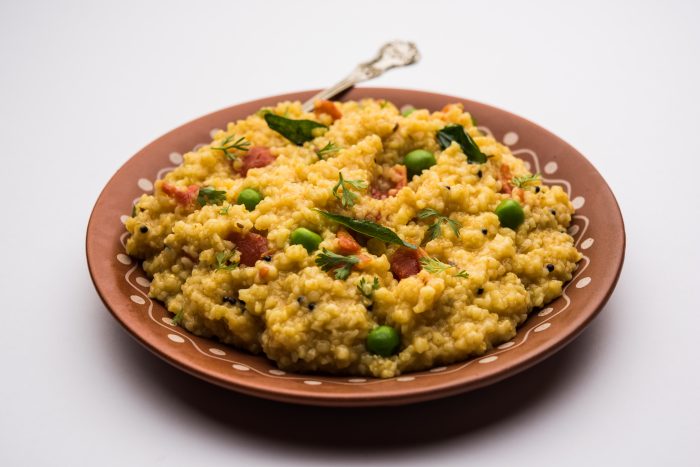
Ingredients:
• 1/2 cup basmati rice
• 1 cup mung dal (split yellow)
• 6 cups (approx.) water
• 1/2 to 1-inch ginger root, chopped or grated
• A bit of mineral salt (1/4 tsp. or so)
• 2 tsp. ghee
• 1/2 tsp. coriander powder
• 1/2 tsp. cumin powder
• 1/2 tsp. whole cumin seeds
• 1/2 tsp. mustard seeds
• 1/2 tsp. turmeric powder
• 1 pinch asafoetida (hing)
• Handful of fresh cilantro leaves
• 1 1/2 cups assorted vegetables (optional)
Method:
1. Carefully pick over rice and dal to remove any stones. Wash each separately in at least 2 changes of water. Add the 6 cups of water to the rice and dal and cook covered until it becomes soft, about 20 minutes.
2. While that is cooking, prepare any vegetables that suit your constitution. Cut them into smallish pieces. Add the vegetables to the cooked rice and dal mixture and cook 10 minutes longer.
3. In a separate saucepan, sauté the seeds in the ghee until they pop. Then add the other spices. Stir together to release the flavours. Stir the sautéed spices into the cooked dal, rice, and vegetable mixture. Add the mineral salt and chopped fresh cilantro and serve.
Turmeric smoothie with ginger
Ancient Ayurveda used turmeric for wound healing and as an anti-inflammatory. Here’s a healthy turmeric smoothie recipe with ginger, for days when you’re feeling under the weather or need a pick-me-up.
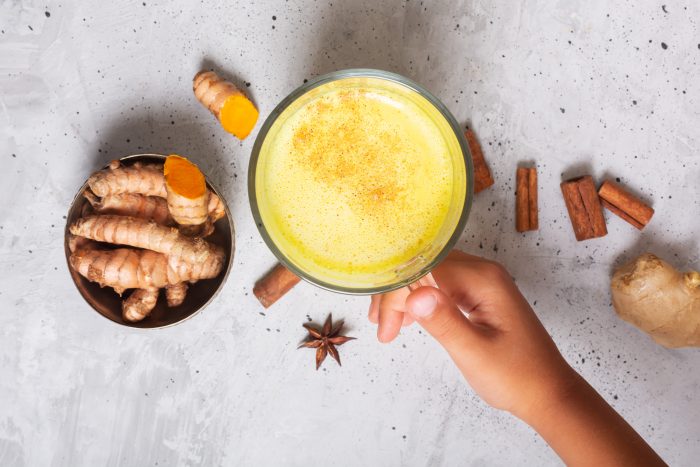
Ingredients:
• 1 1/2 cups unsweetened coconut milk
• 1 tsp turmeric
• A pinch of black pepper
• 1/2 tsp grated ginger
• 1 tsp coconut oil
• 2 tsp honey
Method:
1. Mix all the ingredients and blend on high speed until smooth.
2. Variations – you can include your choice of vegetables like carrots, beets, spinach or fruits along with this recipe.
Ayurveda beet soup
Here's a delicious soup recipe that your family will enjoy. Ayurveda emphasises the importance of eating as many fresh, home-cooked meals as possible in order to promote good health and longevity. Here’s one quick meal that will set you on the right track.
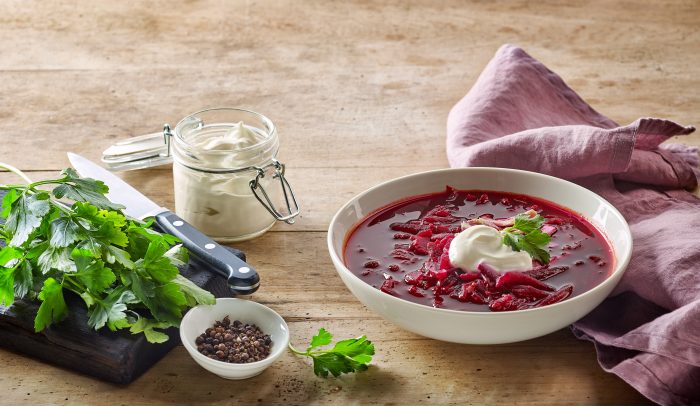
Ingredients:
• 2 cups finely sliced fresh beets cut into ½-inch pieces
• 1 teaspoon minced parsley
• 1 stalk celery, chopped
• ½ onion, chopped (optional)
• 1 tablespoon ghee
• 1 carrot, grated
• ½ cup potato, finely chopped
• 2 tablespoons fresh lemon juice
• 1 tablespoon organic raw sugar
• 5 cups water or vegetable broth
• Fresh yogurt for garnish
Method:
1. Sauté onion in ghee for 5 minutes. Add water, beets, potato, carrot, and celery. Bring to a boil, then cover pot and bring heat to a medium low.
2. Allow to cook for 45 minutes or until beets are tender but not overcooked.
3. Add lemon juice, sugar, salt and pepper. Stir well. Serve with a dollop of yogurt or sour cream on top.
Baked squash
This lovely winter squash is one of the most unique vegetables of the season. Look for the enticing green and gold striations that flank its ridges.
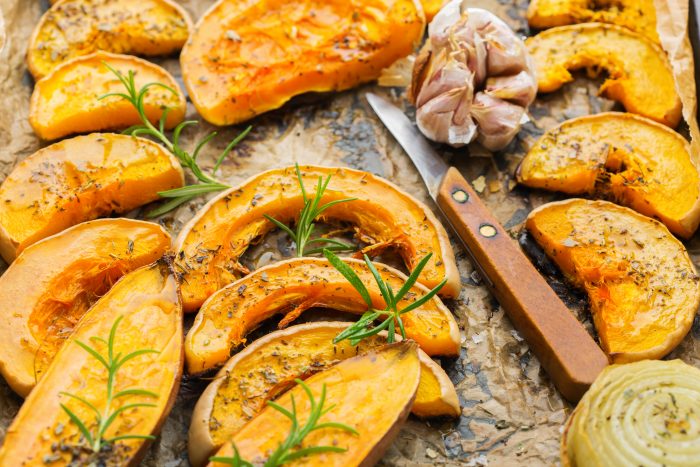
Ingredients:
• 2 large delicata squash, eight to ten inches in length, split lengthwise and seeds and pulp removed with a spoon
• ¼ cup ghee with garlic and rosemary
• ¼ cup golden raisins
• Salt
• Dark brown sugar
Method:
1. Preheat oven to 425° F.
2. In a rectangular casserole dish, bake the prepared squash, covered, cut side down in ¼ inch of water for 30-35 minutes or until tender.
3. Insert a sharp knife into the back of one of the halves to check for tenderness. Leave covered while preparing the sauce.
4. In a small saucepan, add the ghee and bring to a high heat. Add the golden raisins and Kapha Churna, and salt to taste.
5. Stir the ingredients together well until the aroma of spices is released, for about one minute. Remove from the stove and lay the squash halves upright so that the cavity is exposed on each half.
6. With a teaspoon, divide the sauce equally between the squash and lightly blend. Then take several pinches of brown sugar and sprinkle over the top.
Attached is a free printable ayurveda-calendar for 2021 to help you track your healthy meals!

Tarvene Shahpuri
Tarvene is a chocolate and chai fiend who is constantly on the hunt for cute cafes. You can catch her baking some Biscoff cheesecakes or binge-watching Netflix shows. She likes filling up her free time painting, listening to music or going on long drives.


